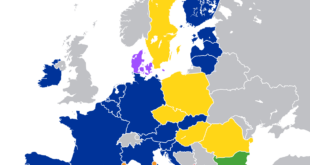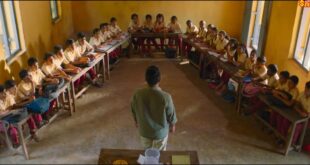- At the recently-held Munich security conference, a major concern of the members of the North Atlantic Treaty Organization (NATO) was the reluctance of the Global South to align itself with the G-7 on the war in Ukraine.
- Although the vast majority of countries across the world condemn the Russian invasion and would like the war to come to an end (as shown in the United Nations vote on the subject in February 2023), very few countries in Asia, Africa and Latin America support the political and economic sanctions on Russia imposed by the G-7.
- The cri de coeur that seems to emerge from these North Atlantic meetings and their inability to rally the rest of the world to wage global war against Russia is: why are not developing nations more like us
- Why do they not share our concern with the future of a rules-based international order, now, for the first time, in tatters, because of Russian actions
The right side of history and ANA
- The answer to these questions is very simple. The developing world, and especially Africa, Asia and the Middle East/West Asia, has been the site of many wars, including those of the proxy kind, in the course of the past 70 years.
- None of them was elevated to the category of a unique war that demanded a global involvement to bring it to an end. Suddenly, a war erupts in Europe, and this means that all bets are off, and all countries should chip in to support Ukraine.
- Yet, as India’s External Affairs Minister S. Jaishankar has put it, “Europe has to grow out of its mindset that Europe’s problems are the world’s problems, but the world’s problems are not Europe’s.”
- Unable to come to terms with the fact that developing nations are unwilling to wage economic war against Russia (let alone provide Ukraine with weapons and ammunition, as the United States and Germany recently tried to induce Latin American countries to do), northern leaders are quite at a loss as to what to do.
- A recent call by Ukraine’s President to African leaders to meet with him over a teleconference turned out to be a fiasco: only four out of 55 showed up.
- The Foreign Minister of Ukraine has gone so far as to call on the Latin American and Caribbean nations “to leave behind their so-called neutrality and put themselves on the right side of history”.
- ANA originated in 2019 and was developed in 2020 in response to the U.S.-China struggle for primacy, in which Latin America was caught in the middle.
- It was a bit of a manifesto calling for Latin American countries not to give in to pressures from either Washington or Beijing and to stick to their own interests.
- It took a page from the honourable tradition of the Non-Aligned Movement (NAM), but adapted it to the imperatives of the new century, impelled by the urgency of the Latin American crisis.
- And the key word is “active”. It is easy to do as you are told. It is much more challenging to embrace agency and come up with a fine-tuned and sophisticated diplomacy that looks at issues on a case-by-case basis.
- And that is what ANA is all about. As it turns out, more than a future-oriented proposal, it is an approach that is already being applied in practice.
- Latin American governments had no difficulty in participating one week in December 2021 in the China-Community of Latin American and Caribbean States (CELAC) ministerial forum in Mexico City, and the next one in the Democracies Summit in Washington DC, seeing no contradiction in doing so.
- Neither have they dithered when it has come to rejecting entreaties to ban the Chinese telecom company, Huawei, from their 5G telecom development. So much so that ANA has been referred to as “ the region’s most significant foreign policy development since the end of the Cold War”. In its year-end balance of 2022, Foreign Policy Magazine called it “the year of Non-Alignment”.
India’s difficult balancing act
- Moreover, reactions in the Global South to the war in Ukraine show that ANA is not limited to Latin America.
- ANA arose in the context of the U.S.-China spat, and the conflict with Russia has its own features, but shares others, including a certain dynamic of “the West vs. the Rest”.
- India plays a key role in it, having taken a clear stand of non-alignment on the war, despite its closer ties with the U.S. in recent years, and its membership in the Quadrilateral Security Dialogue (“the Quad”).
- As host and chair of this year’s G-20, India is managing the difficult balancing act of keeping this important informal group of developed and developing nations, that was instrumental in handling the 2008-09 financial crisis, on a steady course, despite the tensions this entails, as became evident in the G-20 Finance Ministers meeting held in Bengaluru recently.
- Seventeen African countries abstained in the United Nations General Assembly vote to condemn the Russian invasion of Ukraine. And South Africa, the African continent’s most developed economy, took this independence from the G-7 one step further by scheduling a naval exercise with the Russian Navy and also China off the country’s Indian Ocean coast that was held close to the very anniversary of the Russian invasion of Ukraine.
A role for BRICS
- Moving forward, there is little doubt that the BRICS group — that in many ways embodies the New South that has emerged in the new century — has the potential to play a critical role in furthering some sort of a mediated solution to the Ukraine conflict.
- Brazil, under the leadership of its President Luiz Inacio Lula da Silva, has indicated its interest in promoting a peaceful solution.
- China has come up with its own peace plan. In turn, precisely because of its pivotal position, very much holding the balance in the international balance of power, India is in a privileged position to act as a peace broker.
- This is what ANA is all about. Not passive neutrality, as some would have us believe, but embodying a pro-active attitude aimed at solving problems and generating the badly needed solutions our troubled world needs.
- In the end, what we have on the table are two very different proposals to deal with this tragic war that has brought so much mayhem and suffering to the people of Ukraine.
- One of them is “to do what it takes” to bring about a Ukrainian victory and “weaken Russia permanently”; the other is to look for a mediated outcome, a peace agreement that would necessarily entail a compromise solution acceptable to both parties.
- As to which one will prevail will depend in part on the ability of the Global South not to let itself be drawn into this conflict, but rather aim for a mediated outcome.
SOURCE: THE HINDU, THE ECONOMIC TIMES, PIB
 Chinmaya IAS Academy – Current Affairs Chinmaya IAS Academy – Current Affairs
Chinmaya IAS Academy – Current Affairs Chinmaya IAS Academy – Current Affairs



